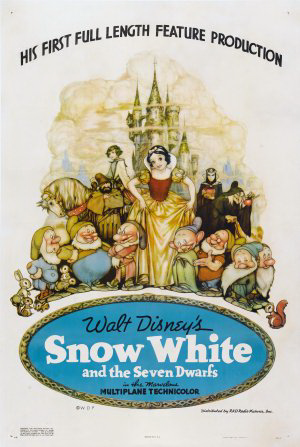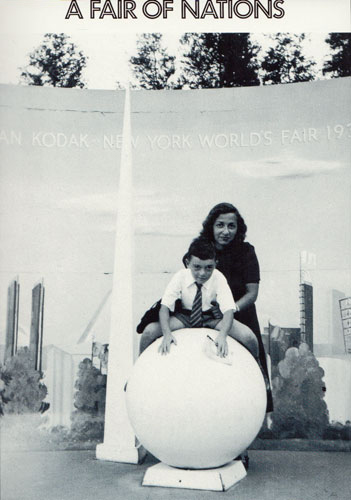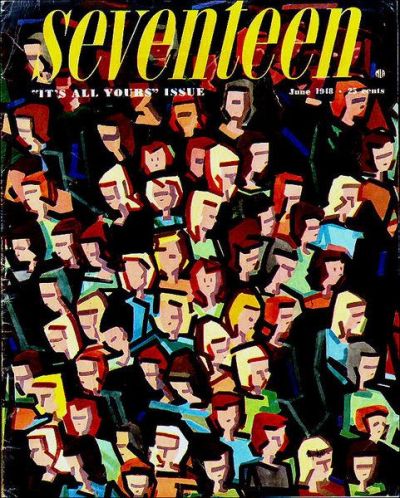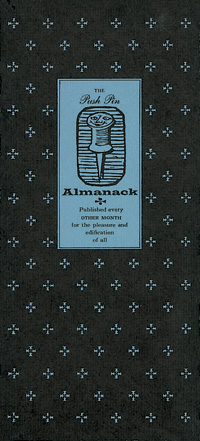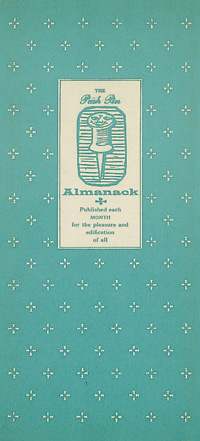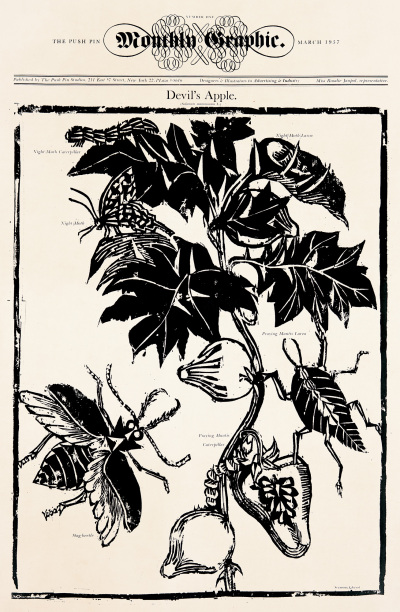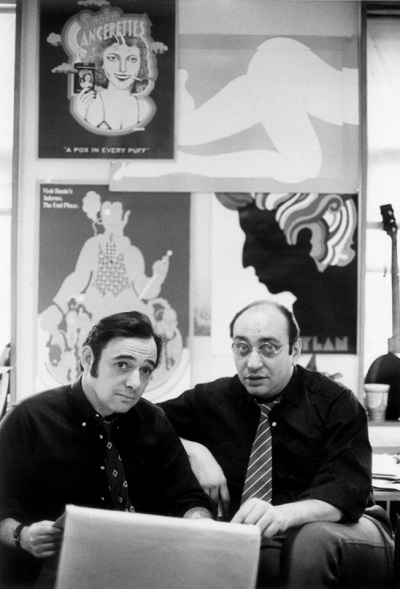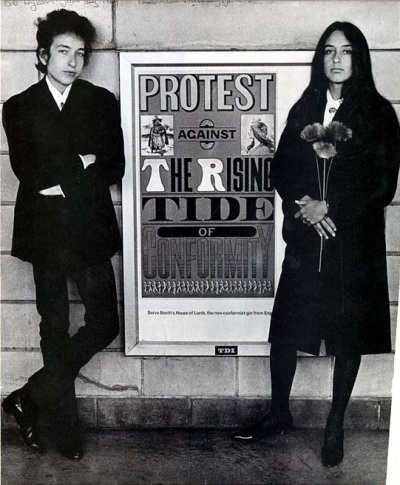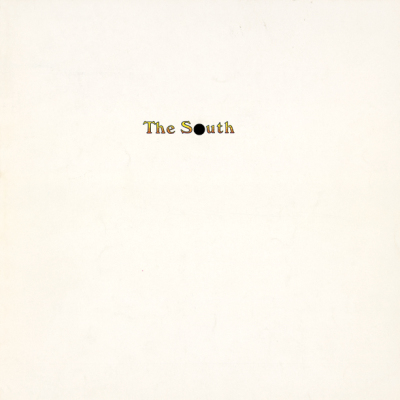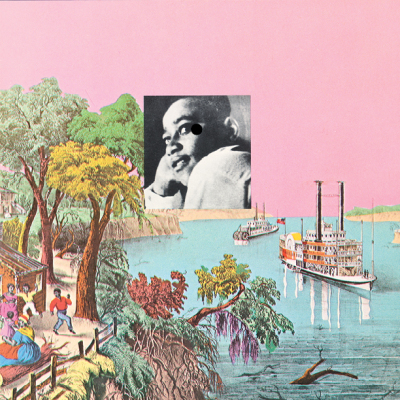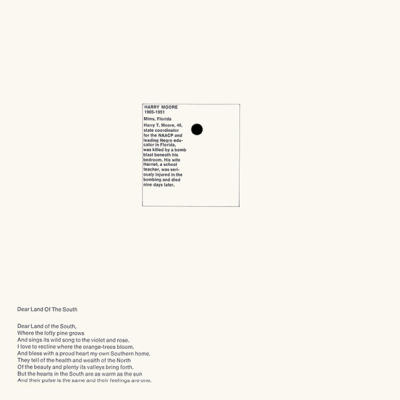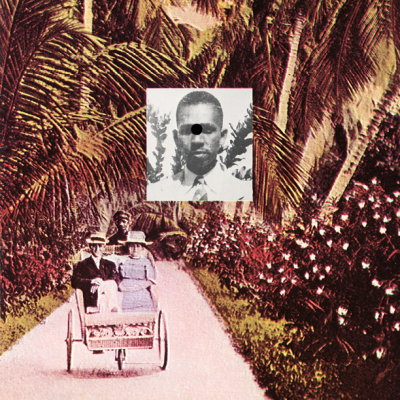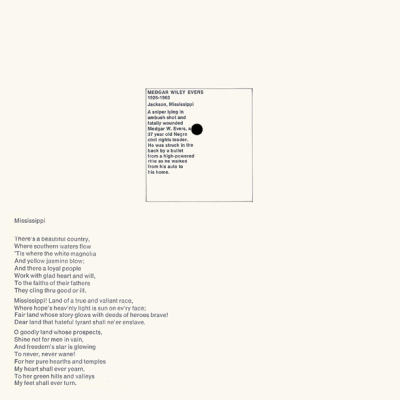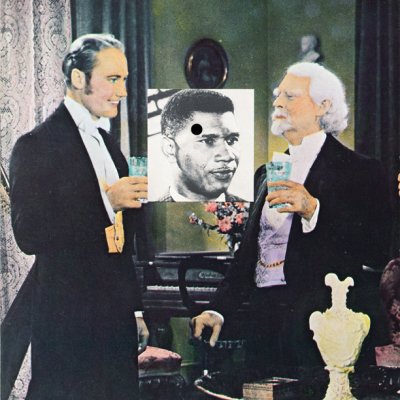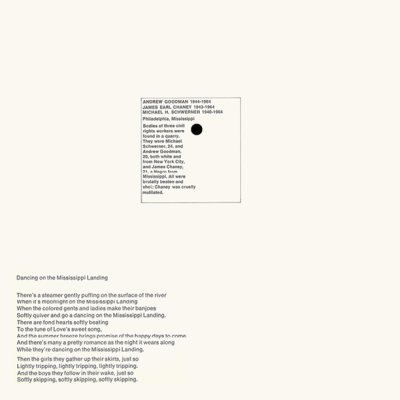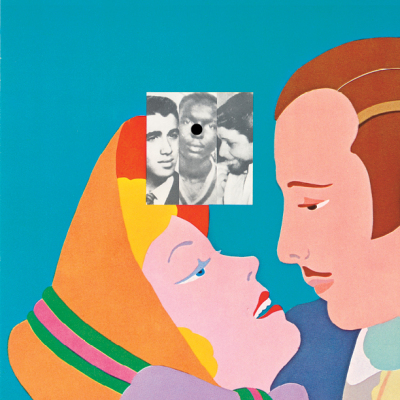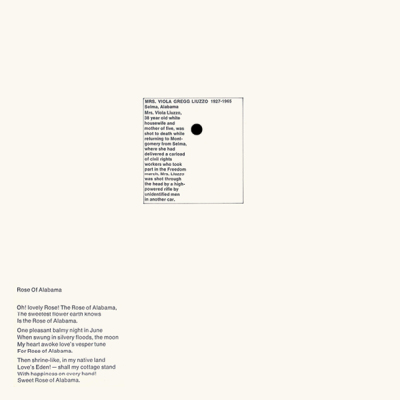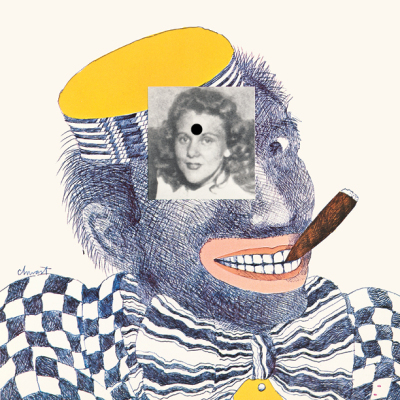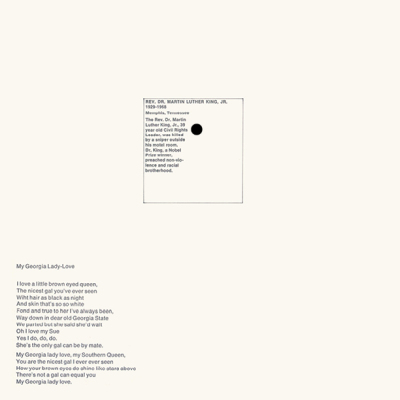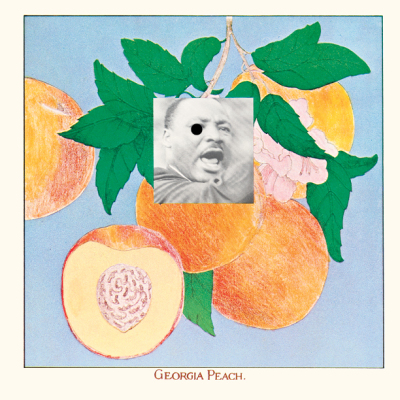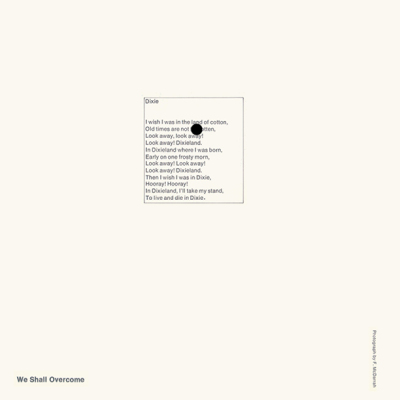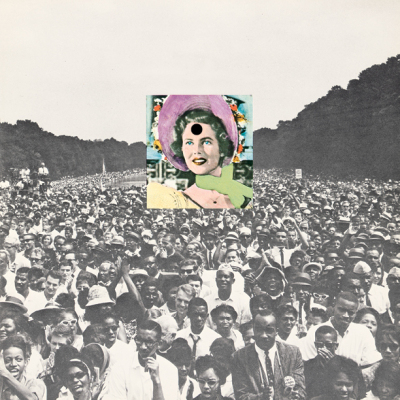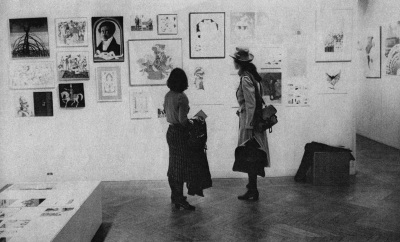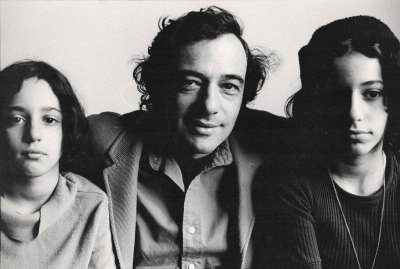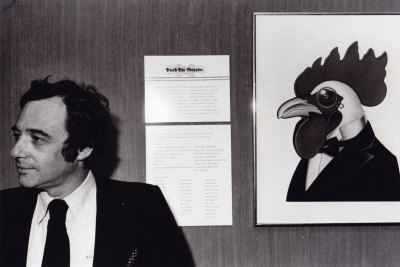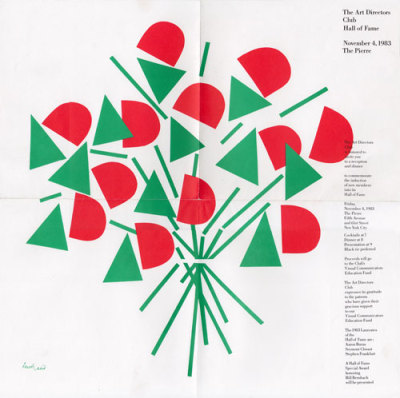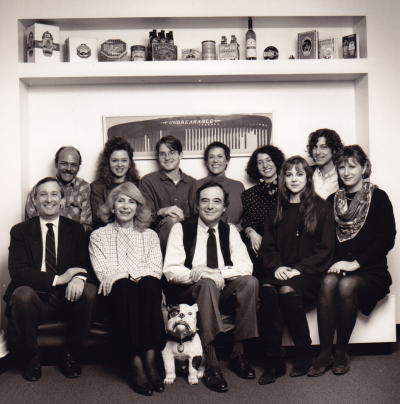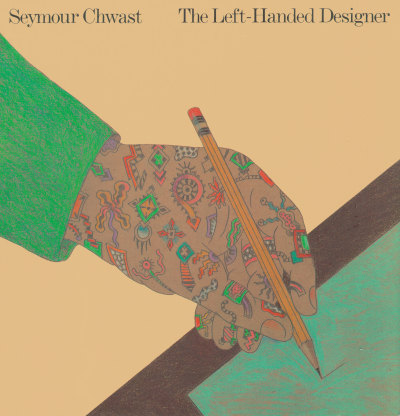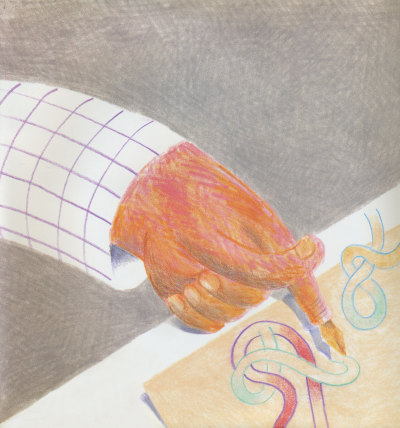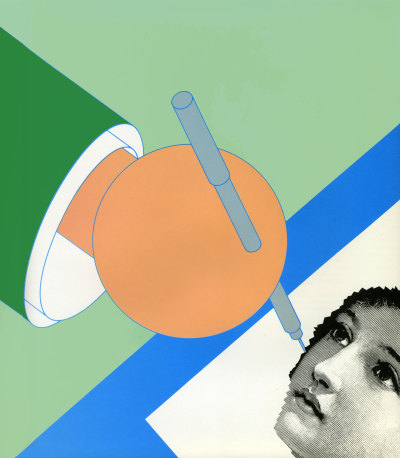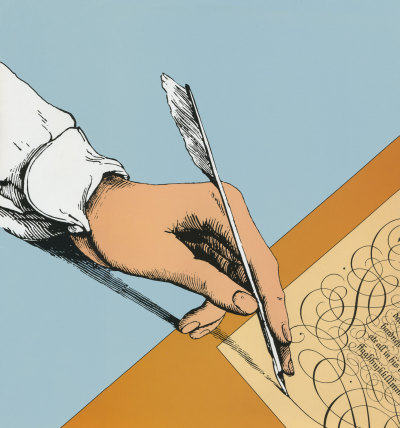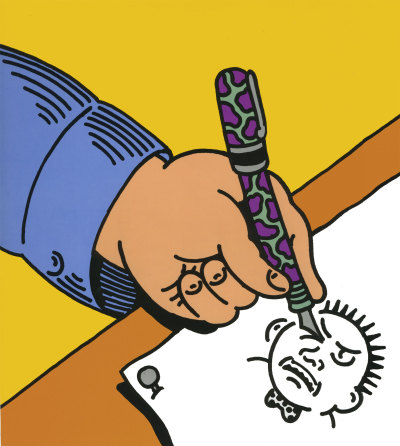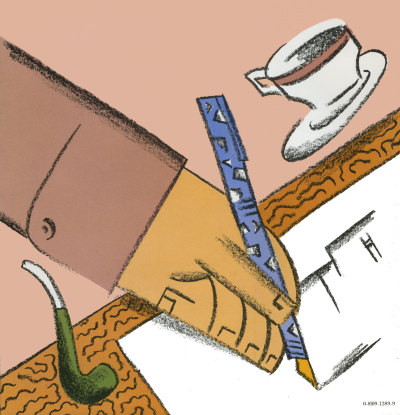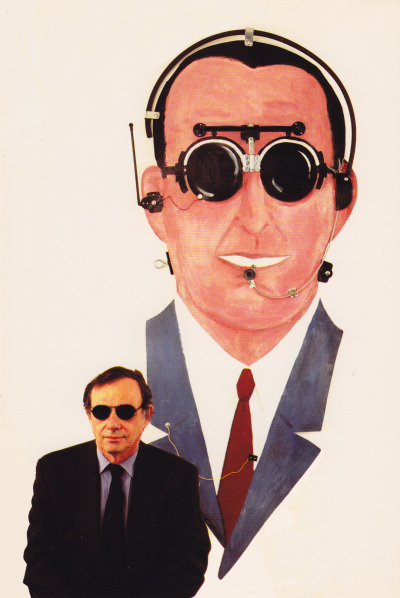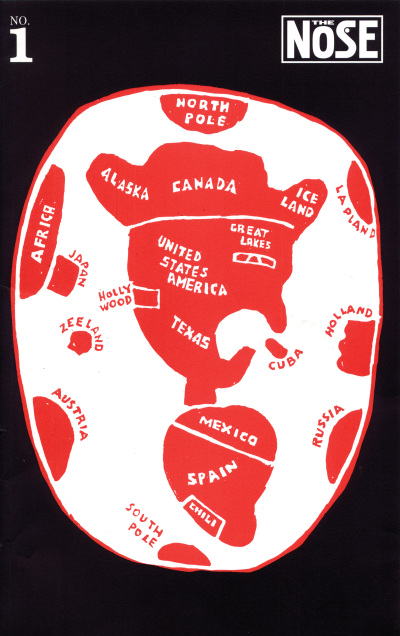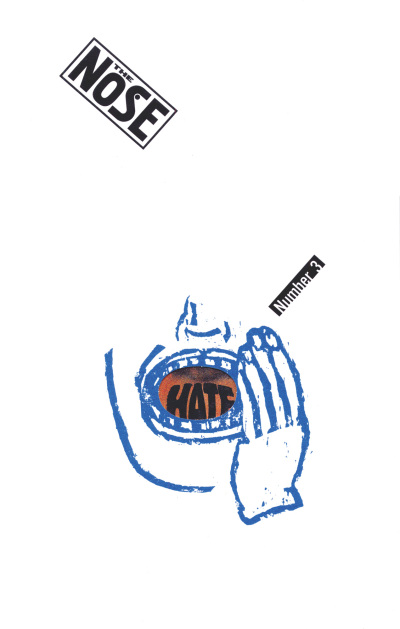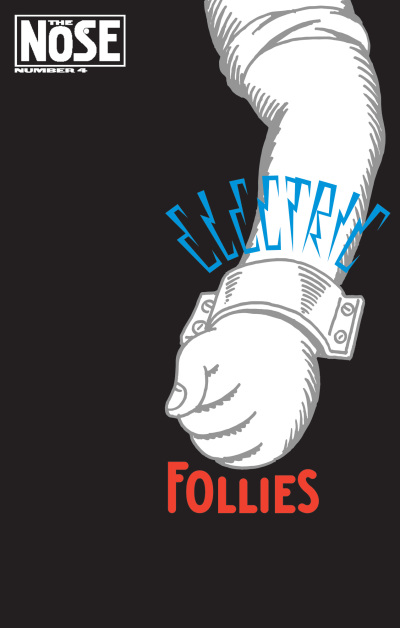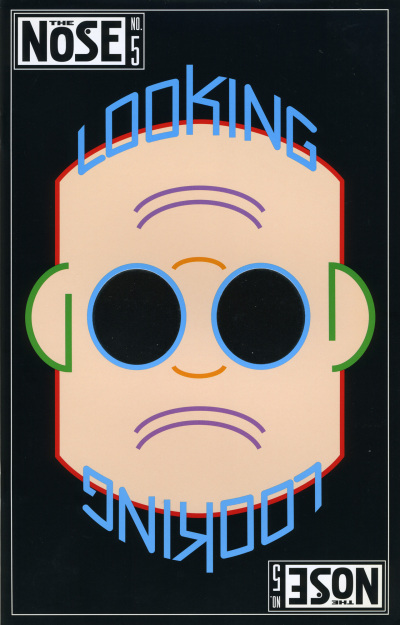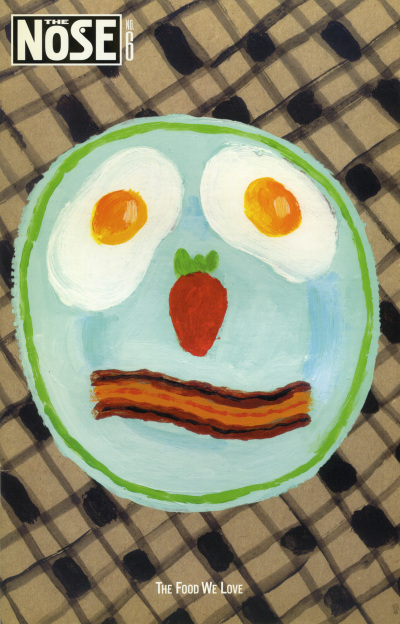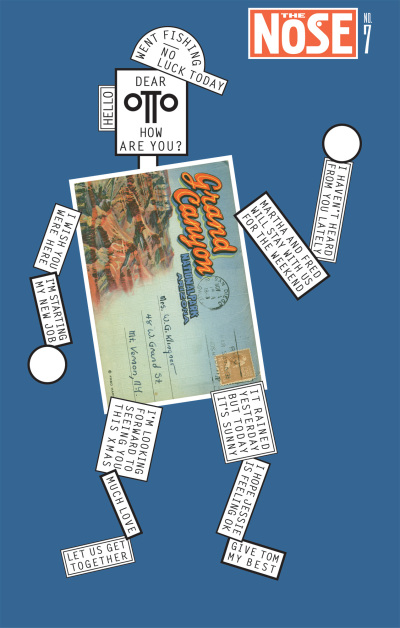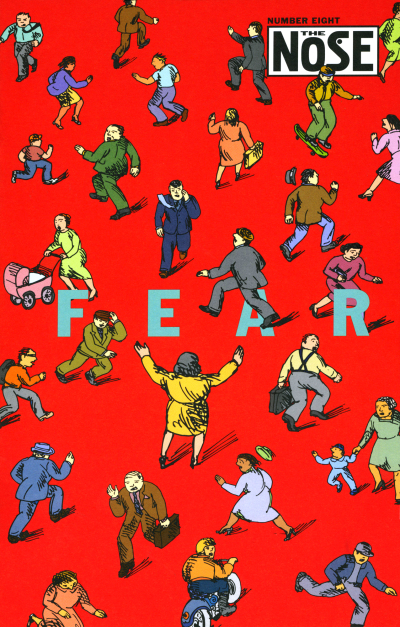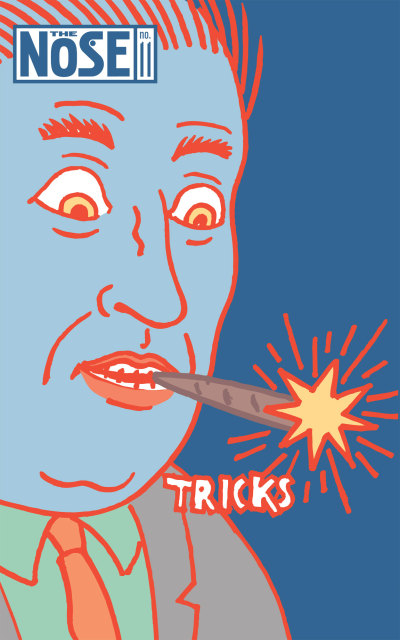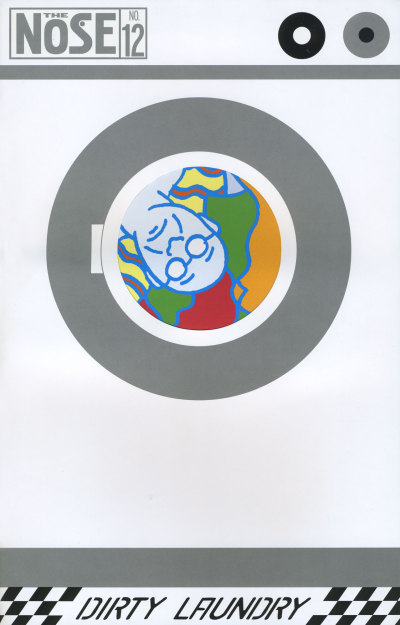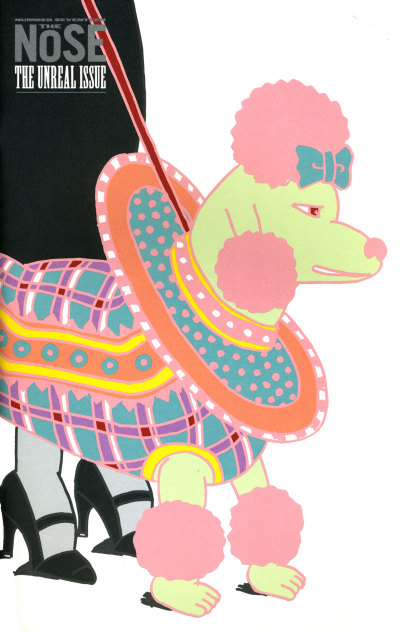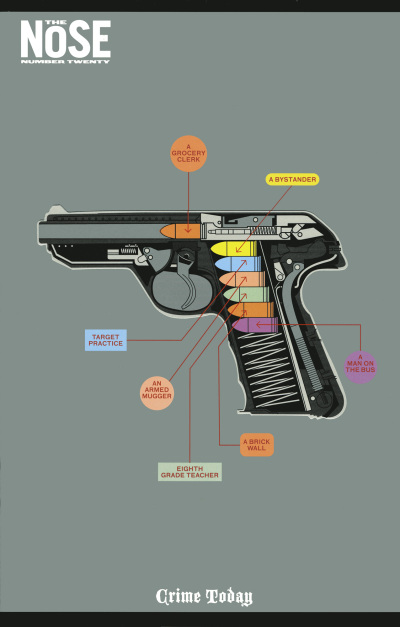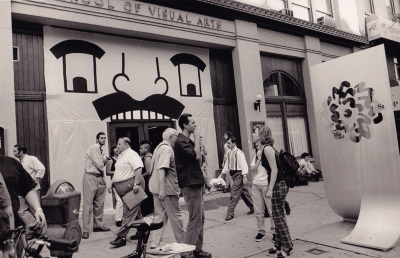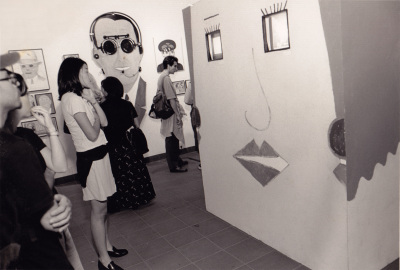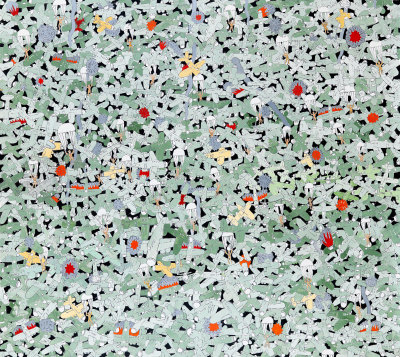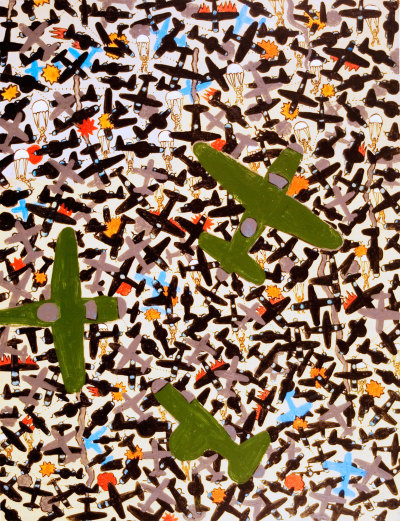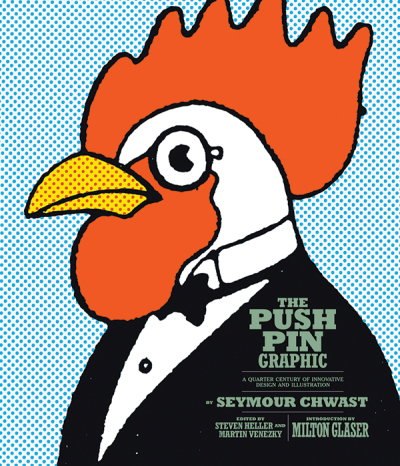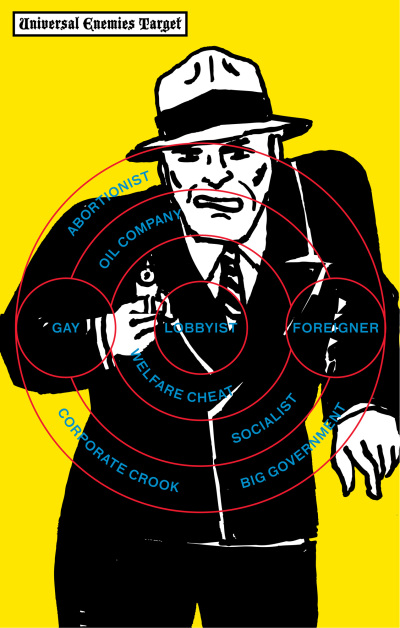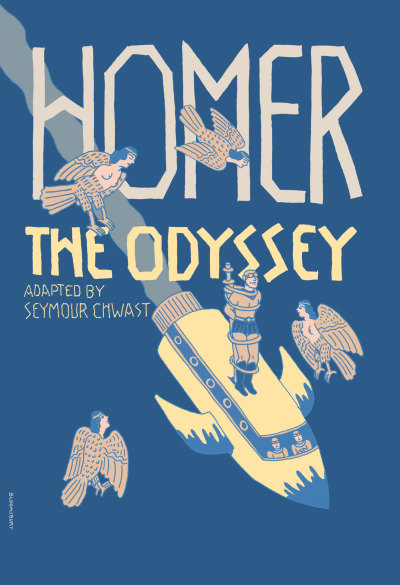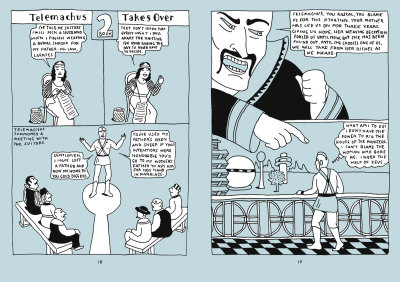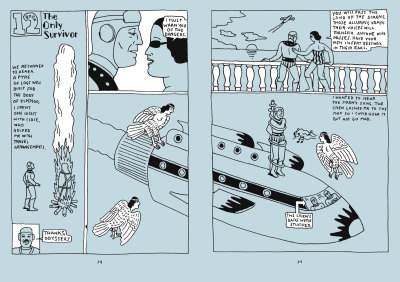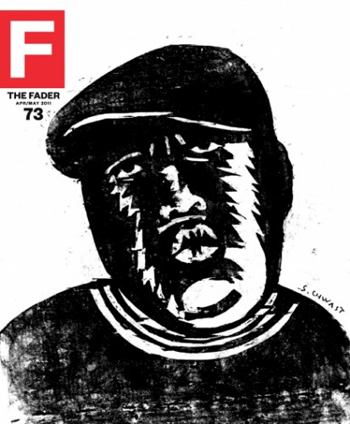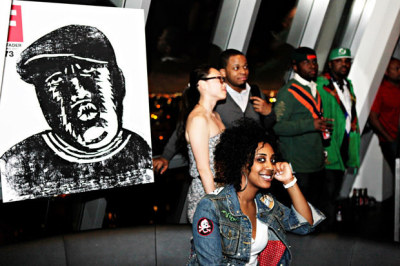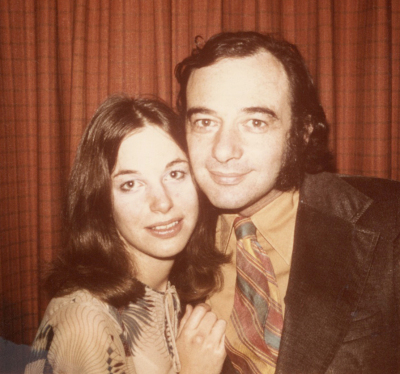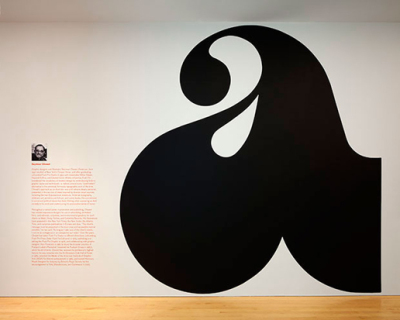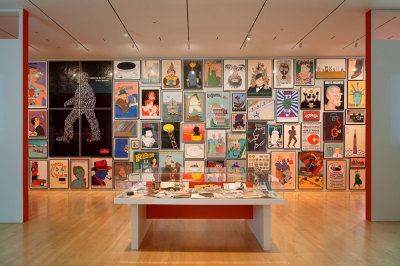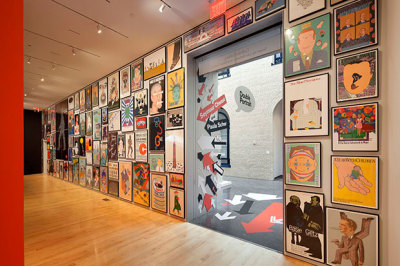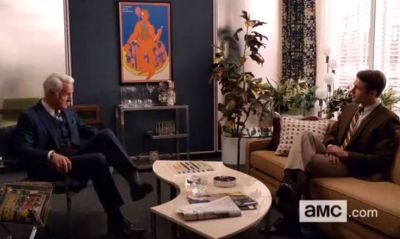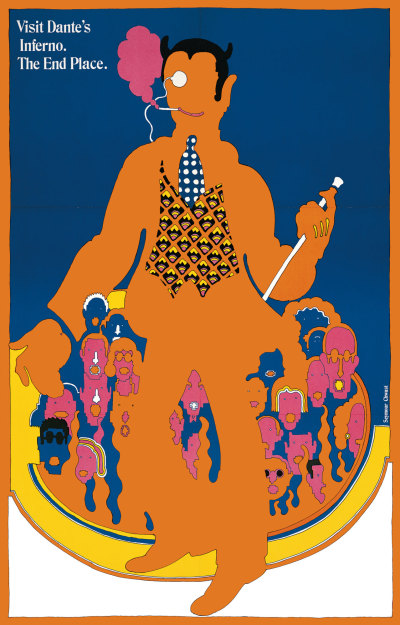Born, the Bronx, New York
Participates in WPA-sponsored art classes.
Attends 1939 World’s Fair, held at Flushing Meadows-Corona Park in New York. Fifty years later, publishes a book on the subject with Barbara Cohen and Steven Heller.
The beginning. Introduced to graphic design by high school art teacher Leon Friend, Chwast joins Abraham Lincoln High’s elite art squad (alumni include Gene Federico and Alex Steinweiss). The group required a portfolio for entry—the beginning of professional life—creating on demand posters, banners, and other materials for school events and social causes. On Saturdays, Chwast often took the subway from Coney Island to Manhattan, ate lunch at the automat, and then spent the afternoon in front of paintings at the Museum of Modern Art. The trips cement his love for expressionism, and expose him to works by Frans Masereel, Georges Rouault, and Ben Shaun, whose 1947 MoMA retrospective had a great influence on the young designer.
I have a strong suspicion the way I draw—and what I draw—were preordained by the time I was nine years of age.
– Seymour Chwast
World War II
Graduates from Abraham Lincoln High School, Brooklyn.
Publishes his first illustration (a drawing of himself dancing at a party) in “It’s All Yours” issue of Seventeen. Art direction by Cipe Pineles.
Origin story. At Cooper Union, studying drawing and painting, Chwast learned he excelled as a nonconformist. After graduation and a few unsuccessful stints in art and promotion departments, he and fellow Cooper classmates Edward Sorel and Milton Glaser form Push Pin Studios in 1954 (Reynold Ruffins joins shortly thereafter). Their fortuitous partnership, along with publication of the Monthly Graphic (started in 1957 and sent to 3,000 art directors), establishes the studio as a force of visual and conceptual imagination. A flood of freelance assignments ignites Push Pin’s unique culture of collaboration.
Graduates from Cooper Union, School of Art
Korean War
Designer, New York Times, Esquire, Reba Sochis Associates, House & Garden, Glamour
Cofounds Push Pin Studios
Vietnam War
Postmodern pioneer. Chwast borrows freely from the past—victoriana, art nouveau, art deco—to create new works that wholly integrate type and art. His expressive poster, book, and packaging designs are resolutely individual, in contrast to the narrative realism of illustration, and the confining sameness of modernism, both popular into the 1960s. Fluent in historical styles and movements, Chwast experiments with primitive folk art, surrealism, expressionist woodcuts, and photomontage. Meanwhile, the Push Pin Graphic provides a continual outlet for the studio’s growing cadre of members—a thematic showcase of talent. Art directed by Chwast and Glaser, each issue tackles a subject, from the arcane (Nutrition and Health, #53), to the political (The South, #54).
Bay of Pigs Invasion
Publishes “The South” issue of Push Pin Graphic
Conscience came before commerce, and The South issue was one of the most trenchant graphic design commentaries during a period known for its social and political activism.
– Steven Heller
Critical acclaim. A sign of American design’s influence abroad, in 1970 “The Push Pin Style,” a retrospective of the studio’s output opens at the Louvre’s Musée des Arts Décoratifs. Push Pin charters a private plane for the event, bringing one hundred guests to the opening in Paris. The first time graphic design is displayed inside the famous museum, the European press praises the groundbreaking show. The exhibition later travels throughout Europe and to Tokyo, Japan, further spreading the group’s influence. After Glaser leaves to start his own studio in 1975, Chwast continues to direct Push Pin, leading the studio for the next 40 years.
“The Push Pin Style,” Push Pin Studios exhibition, Musée des Arts Décoratifs, Louvre, Paris, France.
A milestone in the efforts of the graphic design profession to secure a place among “serious” art forms.
– Print magazine, May/June 1970
Co-designs and art directs Audience
Receives Augustus Saint-Gaudens Award, The Cooper Union
Co-chairs AIGA exhibition “The Mental Picture” with James McMullan to explore emergent, non-traditional themes in the illustration field.
Discovery is a thing that excites me. To find it in my own work doesn’t happen very often but when it does it’s a beautiful thing.
– Seymour Chwast
Cofounds Push Pin Press, to produce trade books on popular culture. Titles include: The Illustrated Cat, The Literary Dog, The Illustrated Flower, and The Great American T-Shirt.
Member of Alliance Graphique Internationale
Celebrates 20th anniversary of the Push Pin Graphic with a retrospective exhibition, Mead Gallery, New York
Thus has Bauhaus/Swiss flourished in the twentieth century, and its elegant geometrics would no doubt have spread all the more had it not been for the pungent breath of Push Pin, gathering force in the late 50s and swelling to a gale in the anarchistic 60s.
– Harold T.P. Hayes, New York Times, March 6, 1977
Seymour Incorporated. Joining forces with designer Alan Peckolick, the two merge studios to become Pushpin Lubalin Peckolick in 1982. The partnership only lasts a few years, and Pushpin’s client base continues expanding with work for larger corporate clients, including: American Express, Mobil Oil, Mohawk Paper, New York Times, and Time Warner. Renamed the Pushpin Group in 1985, the firm diversifies, adding representation services for illustrators, an audio visual arm, and a product line.
Director of Pushpin Lubalin Peckolick
Director of the Pushpin Group
Receives AIGA Medal
Heavy metal. During this period, Chwast begins working in what he calls “two and a half dimensions,” creating large-scale works cut out of sheet metal and painted with acrylic. The pieces take on many forms: television sets, cars, plates of food, household objects, people, and body parts. Exhibited widely, Chwast enjoys the freedom these works afford, allowing him to experiment beyond the limits of “objects against a background.” The series is inspired by a small metal sculpture, gifted to Chwast by designer and friend Ivan Chermayeff.
Honorary Doctor of Fine Arts, Parsons School of Design
Illustrates the first in an ongoing series of Op-Ed columns by Frank Rich for the New York Times.
It’s not easy to leave a home like The Times, where so many friends and brilliant colleagues remain. I am grateful to all of them, as well as to a pair of unexpected collaborators, the artists Seymour Chwast and Barry Blitt, whose inspired drawings took on an Op-Ed life of their own.
– Frank Rich, New York Times, 2011
Obsessions. Beyond frequent client assignments and editorial projects, Chwast continually mines his own psyche for expressive material to explore, examine, and uncover. Reminiscent of the WWII battles he often drew as a child, for a period in the mid-2000s he obsessively paints elaborate scenes of warfare, brilliantly filled with planes, parachutes, tanks, and fighting men. These and other recurring fixations are documented in a 2009 book published by Chronicle. The Nose, started in 1996, provides another fertile outlet for experimentation, and continues in the Push Pin Graphic tradition, as a vehicle of both promotion and expression. The publications’ broad subject matter—bigotry, the death penalty, fear, truth & lies, tricks, the lost art of letter writing—provides further insight into Chwast himself.
I have always tried to use my assignments as platforms for whatever I have to say, while the client, in turn, uses me.
– Seymour Chwast
Publishes The Push Pin Graphic: A Quarter Century of Innovative Design and Illustration (Chronicle Books, San Francisco)
Honorary Royal Designer for Industry, Royal Society for the encouragement of Arts, Manufactures and Commerce, UK
Publishes Seymour: The Obsessive Images of Seymour Chwast (Chronicle Books, San Francisco)
Seymour has always managed to work outside his reputation, his legend, his towering historical position, or even the area in which he’s been pigeonholed.
– Paula Scher
The present. A self-described “designer who illustrates,” Chwast is now well into his sixth decade of professional practice, and his body of work continues to expand tirelessly. In 2010, he began a series of graphic novels for Bloomsbury, creating his own humorous and accessible adaptions of modern classics The Canterbury Tales, The Odyssey, and Dante’s Inferno.
Honorary Ph.D., Rhode Island School of Design
Receives Collab Design Excellence Award, honoring designers who have made a significant contribution to their field, Philadelphia Museum of Art
“Double Portrait: Paula Scher and Seymour Chwast, Graphic Designers,” on view at the Philadelphia Museum of Art. The show marks the first time the couple, who married for a second time in 1989, exhibit their work together.
During Mad Men’s seventh season, Chwast’s Canto XVIII (Push Pin Graphic #52, 1967) ominously evokes the psychedelic ’60s.
The Seymour Chwast poster archive is added to the Modern Graphic History Library at Washington University, in St. Louis.
